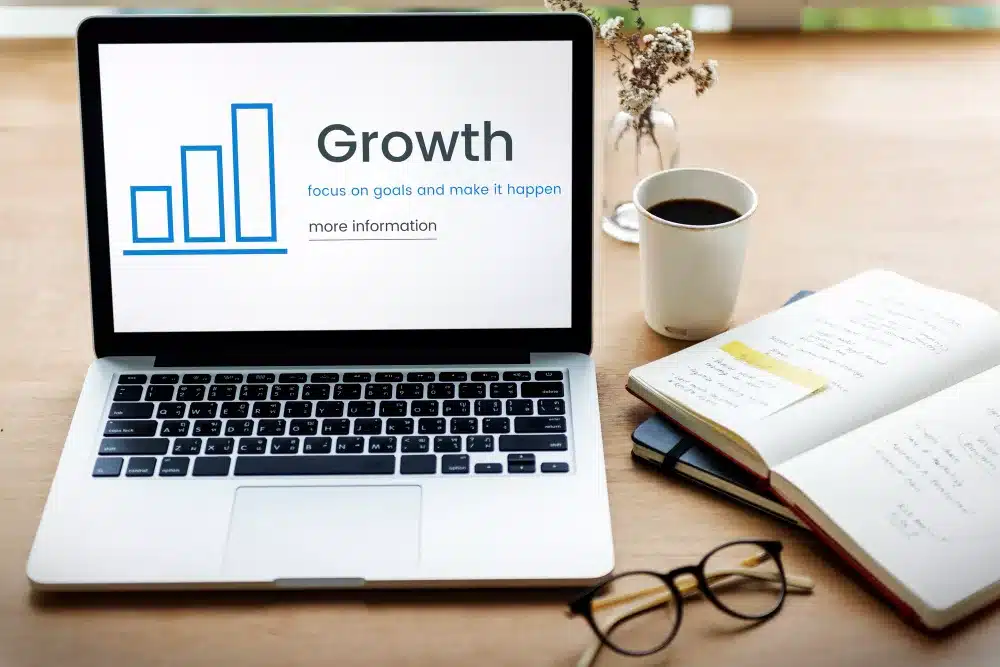The year 2024 presents exciting opportunities for online businesses. With the digital landscape constantly evolving, new technologies and consumer behaviors emerge, demanding strategic adaptation. Whether you’re a seasoned entrepreneur or just starting, understanding these trends and implementing smart growth strategies is crucial for success.
Understanding Your Ecosystem: Niche Down and Know Your Audience
Before diving into specific tactics, a firm grasp of your niche and target audience is essential. This forms the bedrock of your entire marketing and growth approach. Here’s how to refine your focus:
Niche Down:
- Pros: A deeper understanding of specific customer needs, fosters loyal communities, and attracts industry partnerships.
- Cons: Limited reach initially, competitive within a niche.
- Example: Beardbrand, focusing on men’s grooming products specifically for beards, built a dedicated community and became an industry leader.
Know Your Audience:
- Pros: Personalized marketing, targeted solutions, increased customer engagement and loyalty.
- Cons: Requires ongoing research and understanding of evolving demographics.
- Example: Dollar Shave Club identified millennial men’s frustration with overpriced razors and offered a personalized, subscription-based model that resonated with their target audience.
Growth Strategies That Pack a Punch
With your core audience and niche in focus, explore these effective growth strategies for 2024:
1. Content Marketing: Be Informative, Engaging, and Consistent
High-quality content attracts, educates, and builds trust with your audience. Consider diverse formats:
- Blogs: Provide valuable insights, industry trends, and how-to guides related to your niche.
- Videos: Utilize explainer videos, product demos, and behind-the-scenes glimpses to engage viewers.
- Podcasts: Share in-depth interviews, discussions, and thought leadership within your industry.
- Infographics: Present complex data in visually appealing and easily digestible formats.
Pros: Organic traffic growth, improved brand awareness, SEO benefits, lead generation. Cons: Requires ongoing content creation, needs audience research, and content needs to be consistently high-quality.
Real-world example: HubSpot became a content marketing powerhouse by offering valuable resources on inbound marketing, attracting millions of monthly visitors, and establishing itself as an industry leader.
2. Leverage Social Media: Foster Community and Amplify Reach
Engage with your audience and build communities on relevant social media platforms:
- Run interactive campaigns and contests.
- Respond to comments and messages promptly.
- Utilize social media stories for real-time engagement.
- Collaborate with influencers in your niche.
Pros: Increased brand awareness, direct audience interaction, cost-effective marketing, and community building. Cons: Requires platform-specific content strategies, managing negative comments, and time investment.
Real-world example: Glossier built a massive following on Instagram by showcasing user-generated content and fostering a community obsessed with its beauty products.
3. Embrace Video Marketing: Tell Captivating Stories and Showcase Products
Video is king in the digital age. Use the video for:
- Product demos and explainer videos.
- Customer testimonials and case studies.
- Live Q&A sessions and behind-the-scenes tours.
Pros: High engagement rates, improved conversions, enhanced brand storytelling, SEO benefits. Cons: Production costs can be high, and require video editing skills.
Real-world example: GoPro‘s user-generated video campaigns showcasing breathtaking adventures drive their brand identity and product demand.
4. Master Search Engine Optimization (SEO): Attract Organic Traffic
Ensure your website ranks high on search engine results pages (SERPs) for relevant keywords:
- Optimize website content with targeted keywords.
- Build high-quality backlinks from reputable websites.
- Ensure your website is mobile-friendly and loads quickly.
Pros: Long-term, sustainable traffic growth, improved brand visibility, cost-effective. Cons: Requires ongoing SEO efforts, results take time to see, competitive landscape.
Real-world example: NerdWallet‘s focus on SEO and content targeted at specific financial keywords attracts millions of organic visitors looking for financial advice.
5. Paid Advertising: Targeted Reach and Conversions
Consider strategic paid advertising campaigns on platforms like Google Ads, Facebook Ads, and Instagram Ads:
- Target specific demographics and interests.
- Run A/B tests to optimize ad campaigns.
- Track performance and adjust budgets accordingly.
Pros: Faster reach, targeted audience acquisition, measurable results, high conversion potential. Cons: Requires budget allocation, campaign management skills, and competition for ad space.
Real-world example: Warby Parker, the online eyewear retailer, utilized targeted Facebook Ads based on demographics and interests to reach new customers, resulting in significant brand growth.
Cons: Requires budget allocation, campaign management skills, and competition for ad space.
6. Build Strong Email Marketing: Nurture Leads and Drive Sales
Email marketing remains a powerful tool for fostering long-term relationships and driving sales:
- Segment your audience for personalized email campaigns.
- Offer valuable content like newsletters, exclusive offers, and educational resources.
- Utilize automation for triggered emails and abandoned cart recovery.
Pros: High ROI, direct communication with customers, personalized campaigns, trackable results. Cons: Requires email list building, compliance with regulations, and email fatigue prevention.
Real-world example: Sephora effectively segments its email list and sends hyper-personalized product recommendations based on past purchases and browsing behavior, leading to significant sales growth.
7. Embrace Personalization: Create Unique Customer Experiences
Personalization goes beyond generic emails. Offer customized product recommendations, targeted content, and loyalty programs:
- Utilize customer data for product recommendations and abandoned cart recovery.
- Offer tiered loyalty programs with personalized rewards.
- Leverage chatbots for personalized customer support.
Pros: Increased customer engagement, improved loyalty, higher conversion rates, and better brand perception. Cons: Requires customer data collection and management, potential privacy concerns, AI and personalization tools investment.
Real-world example: Amazon recommends products based on individual purchase history and browsing behavior, creating a highly personalized shopping experience that keeps customers coming back.
8. Partner with Strategic Affiliates: Expand Reach and Expertise
Collaborate with complementary businesses for mutual benefit:
- Run co-branded marketing campaigns.
- Offer guest blog posts or webinars.
- Partner on product bundles or giveaways.
Pros: Access to new audiences, leverage partner expertise, increased brand awareness, cost-sharing benefits. Cons: Careful partner selection is required, to ensure alignment with brand values and potential profit-sharing agreements.
Real-world example: Spotify partnered with Uber to offer a free bundled subscription, expanding its reach to Uber’s large user base while offering Uber users valuable entertainment on the go.
9. Utilize Data and Analytics: Measure, Learn, and Adapt
Data is your friend. Track key metrics and analyze results to continuously improve:
- Website traffic and user behavior.
- Marketing campaign performance.
- Conversion rates and sales funnels.
Pros: Data-driven decision-making, optimizing marketing efforts, improving customer experience, identifying growth opportunities.
Cons: Requires data analytics skills, setting clear goals and KPIs, potential data overload.
Real-world example: Netflix uses A/B testing to personalize thumbnails and recommendations based on individual user data, resulting in significantly higher engagement and watch time.
10. Invest in Customer Service: Build Trust and Loyalty
Exceptional customer service fosters trust and encourages repeat business:
- Offer omnichannel support (phone, email, chat).
- Respond promptly and resolve issues efficiently.
- Go the extra mile to exceed customer expectations.
Pros: Increased customer satisfaction, improved brand reputation, higher lifetime customer value, positive word-of-mouth marketing.
Cons: Requires investment in customer service infrastructure, training, and staffing.
Real-world example: Zappos is renowned for its customer service, offering free returns and 24/7 support, creating a loyal customer base who rave about their positive experiences.
Remember: Success doesn’t happen overnight. Choose a few strategies that align with your resources and niche, implement them consistently, and track your progress. Be patient, adapt as needed, and enjoy the journey of growing your online business in 2024!
Additional Tips:
- Stay up-to-date with emerging technologies and trends.
- Don’t be afraid to experiment and try new things.
- Focus on building strong relationships with your customers.
- Celebrate your successes and learn from your failures.
With dedication and a data-driven approach, you can achieve sustainable success and unlock the full potential of your online business in 2024 and beyond.

